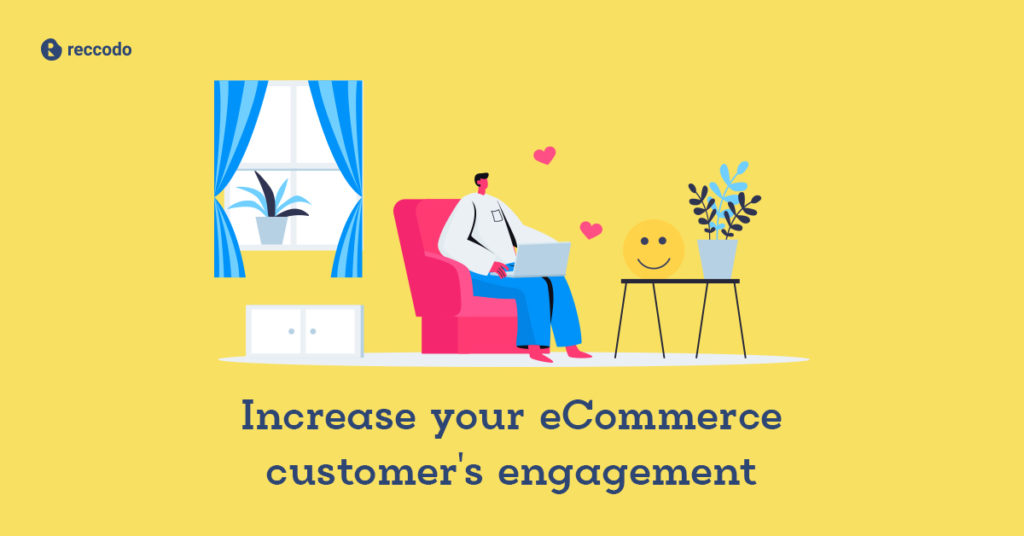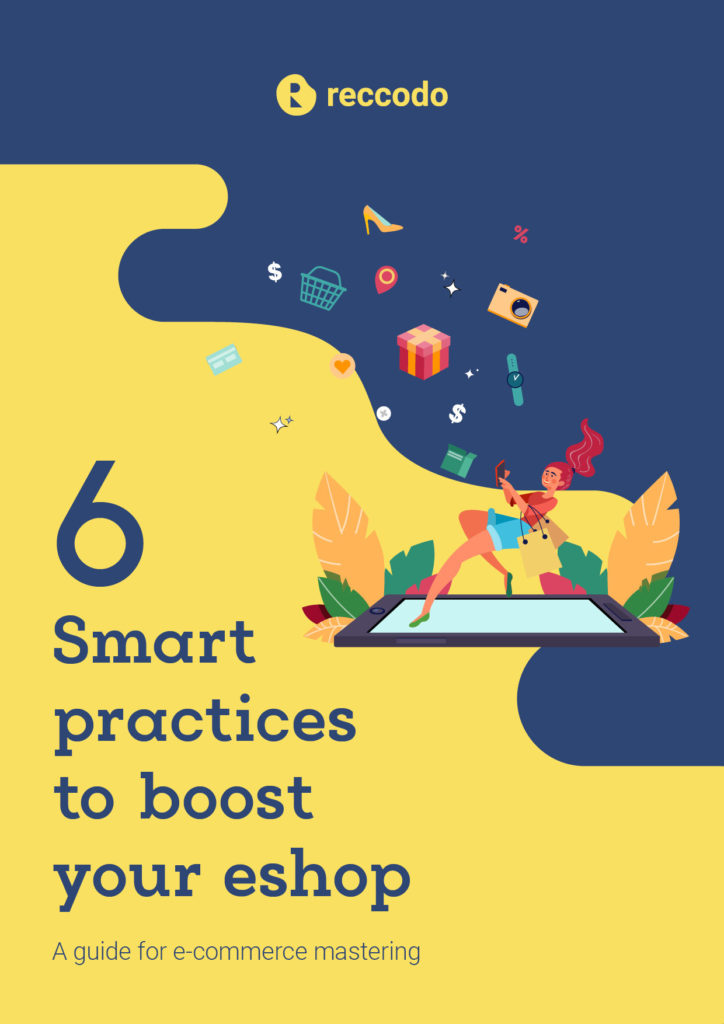We prepared a list with eCommerce best practices which will contribute to the increase in your customers’ satisfaction!
1. Invest in images with good quality
How many times have you visited a website and left due to a terrible image?
High quality imagery can attract more clients to your e-shop and entice them to buy your products. According to digital marketers, an appealing image crabs your customers’ attention and consequently enhances the engagement rate. If a viewer engages with your content the possibilities for conversion are higher.
According to digital entrepreneur and strategist Jeff Bullas, 67% of online shoppers admit that customer reviews and product information are less important than the images of a product. That’s why, as an e-shop owner, you should create your own images based on your e-shop’s aesthetics.
By using the right images, you will notice your conversion rate improving drastically!
2. Focus on your product description
Good product descriptions are a very important element to make the customers engage with your site. To be more specific, a good description can:
- Improve conversion rate
- Inform customers about the product details
- Create value
- Contribute on SEO
Make sure your descriptions are short texts and to the point!
Give value!
3. Provide different channels of Customer Service
Sooner or later customers will need your help, so be prepared to assist them with any request.
Customer Service is very important if you want to have repeatable satisfied clients. The best way to achieve this, is by having various options of communication such as:
- Phone
- Live chat
Each customer prefers a different way to engage with a company, and most individuals prefer to text rather than talk. When they are researching a product, you should be able to provide your help as soon as possible.
Whichever communication method you choose don’t forget to be kind and friendly as a pleasant customer experience builds strong relationships and boosts customer loyalty.
4. Add Breadcrumbs on your site
Breadcrumbs are the secret power of any eCommerce store! Breadcrumbs help the user navigate easily and quickly through your site, especially on large websites in which the products are grouped in categories
Here’s an example of how a breadcrumb looks:

The above path allows users to have quick access from their current page, back to the landing page. And this is not the only reason why breadcrumbs are so important. Research has proven that breadcrumbs can reduce the bounce rate of a user. This makes sense as people have limited time and want to finish their purchases easily and efficiently.
 Additional Insight: Breadcrumbs improve your SEO!
Additional Insight: Breadcrumbs improve your SEO!
5. Be Trustworthy
Every good relationship is based on trust. In the case of a business like an e-shop, trust refers to the relationship between the e-shop and the customer. If your e-shop is already a big brand it is much easier for the customers to trust you. However, you should keep providing excellent service and products to keep the trust level high!
But why would a customer trust you if you are a small business with no reputation?
Here are some good elements to add to your website in order to increase your trust level:
- Trust Badges (like SSL Certification, Antivirus secure)
- Positive Reports of your company in a newspaper or magazine (known as press coverage).
- Reviews, Testimonials
- Social Proof
- Contact Numbers
- Physical Address
The suggestions above can improve your trust level, so implement them as soon as possible.
6. Declare Free Shipping
An e-shop that provides free shipping with each purchase is automatically put at the top of any customer’s list. A Forrester research study (2010) showed that shipping charges is the top reason behind cart abandonment. With this suggestion, there is a noticeable reduction on cart abandonment and consequently, increase in order number.
Be prepared for order increase, and make sure that you can handle the amount of the orders. You don’t want to enhance the cart abandonment and lower the quality of customer service.
7. Reward Programs
In order to have a complete vision of reward programs, let’s have a look at the chart below.

Customer loyalty indicates that the same customers constantly come to your website for their shopping needs. Like in every relationship you should appreciate those who are loyal to you. Businesswise this can be achieved via rewards programs.
Loyalty Programs
Point-Based Program: This loyalty program is designed to reward customers via monetary levels, which converts into a points system. These points can be redeemed for future purchases. An example is Walgreens, Walgreens offers 40,000 points for every $50 a customer spends on beauty products.
Hybrid Program: Walmart has applied a loyalty program in partnership with Murphy USA gas stations, Neighborhood Market, Sam’s Club, and MasterCard. Instead of earning points for future discounts, customers receive direct discounts with Walmart partners.
Referral Programs
A referral program is a powerful marketing tool – it boosts sales and increases your trust level with customers. This type of program rewords both the referrer and the new customer.
Airbnb offers $25 to both the referrer and referee when an invited friend books their first trip. A win-win situation!
8. Product Recommendation System
Every customer is unique and should be treated that way. Imagine an e-shop which can provide a virtual shop assistant 24/7. By using a personalized recommendation system, you can.
Amazon is the king in this field by having its own recommendation system. Research have proven that 35% of Amazon.com revenue is generated by its product recommendation engine. You can easily realize why it’s important to have a tool like this for your e-shop.
Based on the combination of AI and Machine Learning, the algorithms create small groups of personas and they show to each group products that are relevant to the customers’ needs and wishes. In fact, the recommendations are items that the customers are more likely to buy. As a result, online shopping becomes easy, quick and the customer experience improves.
Don’t forget that a good customer experience reduces the bounce rate!
Below you can see an example of Amazon’s product recommendation engine. This is a typical carousel with product recommendations from different categories. Amazon believes that these products are more likely for the customer to buy or at least is interested to see details of.

Another example of personalization is Netflix. The platform shows recommendations based on different interests and age groups. Their carousels change depending on the category the user chooses. For example, recommendations will differ if a viewer is interested in movies or in TV series.
9. Upselling and Cross-selling
Upselling refers to increasing the basket value with similar products or characteristics, but with higher price points. A product recommendation system can ‘’do the job’’ for you. It will suggest products more expensive than the initial selection or an upgrade to increase your e-shop’s revenue.
Often, customers don’t know what extra they might need when they are buying something, until you show it to them. That’s the point of cross-selling! For example, if a customer buys a mobile phone, it’s possible they need a mobile case or a car charger (if not included in the package). A good recommendation system can predict possible product combinations and make them a bundle.

Both above sales techniques can easily be implemented and change your revenue evidently.
Wrapping up
Ecommerce changes rapidly. As an ecommerce business owner, you should be up to date with the new trends, methods and practices that can boost your sales. The information is excessive, and no one can apply all the practices overnight. Choose your starting point practice based on your priorities!
Afroditi Tsaparoglou
Sales Executive at Reccodo
References
https://www.cloudways.com/blog/ecommerce-best-practices/
https://www.quicksprout.com/best-practices-for-running-a-successful-ecommerce-website/
https://rubygarage.org/blog/ecommerce-best-practices
https://blog.retargeting.biz/product-photography-your-e-shop-calling-card/
https://www.groovehq.com/blog/customer-service-channels
https://yoast.com/breadcrumbs-seo/
https://www.ecommerce-nation.com/why-should-ecommerce-retailers-offer-free-shipping/
https://www.shopify.com/blog/loyalty-program
https://blog.hubspot.com/service/upsell-and-cross-sell
Is your eCommerce set up for Growth?
Answer the key questions and find out ideas that will skyrocket your customer experience!


